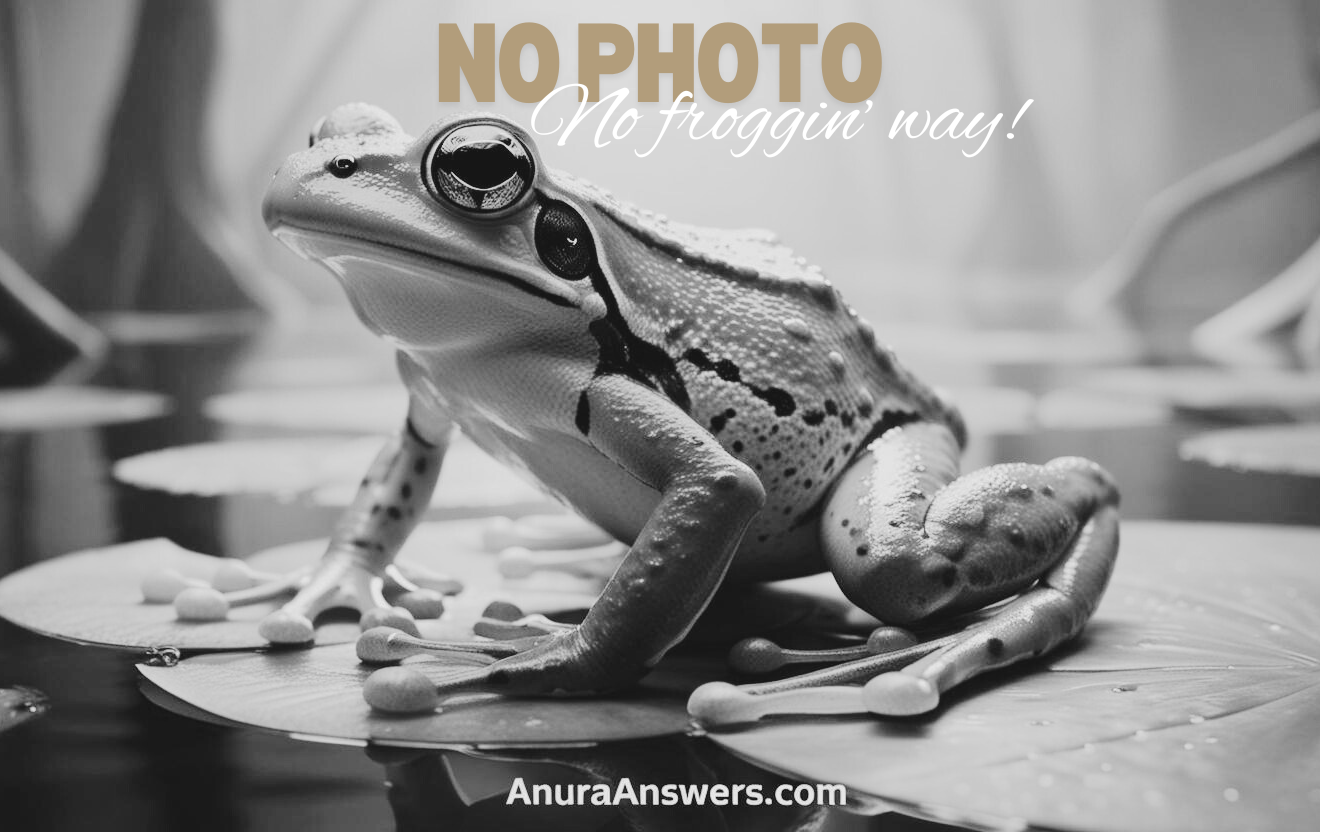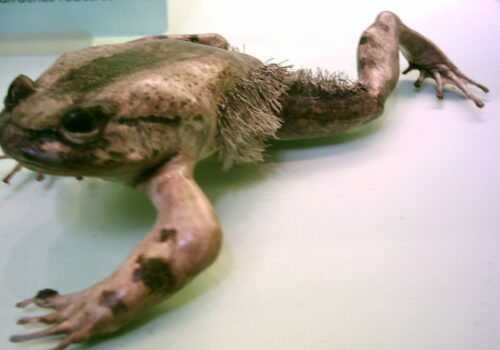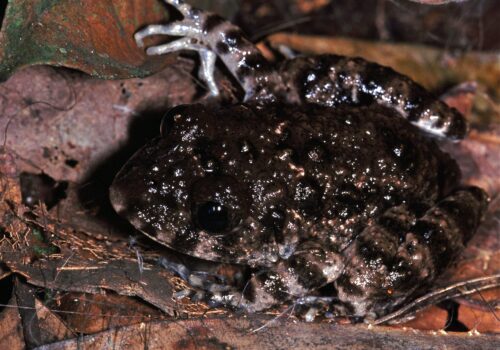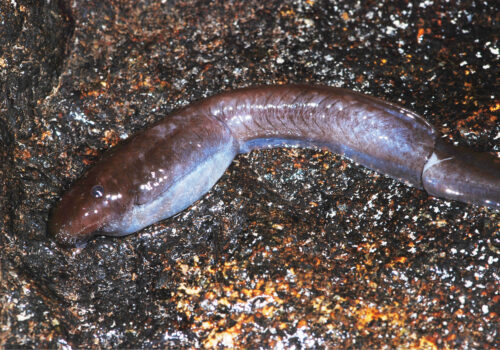- Exploring Leptopelis parvus: The Enchanting Little Forest Frog
- Taxonomy and Classification
- Natural Habitat: The Hidden Worlds of Moist Tropical Forests
- Physical Characteristics: A Study in Subtle Elegance
- Behavior and Life Cycle: Delicate Songs and Hidden Lives
- An Essential Ecological Role
- Conservation Status and Threats to Survival
- Cultural Reverence and Scientific Significance
- Preserving a Tiny Guardian of the Forest
Exploring Leptopelis parvus: The Enchanting Little Forest Frog#
Hidden among the lush leaves and moss-carpeted logs of East African forests resides a tiny amphibious jewel: the graceful Leptopelis parvus. Despite its modest size, this frog embodies the incredible adaptability, beauty, and ecological significance of amphibians. Known by naturalists for its striking hues and melodic calls, Leptopelis parvus adds its distinct voice to the choir of the rain-swept night.
Commonly named the small forest tree frog, it inhabits delicate ecosystems, often serving as an indicator of the environmental health in which it resides. Join us as we enter the captivating realm of Leptopelis parvus, exploring its habitat, remarkable adaptations, and the ongoing fight to preserve its future.
Taxonomy and Classification#
Leptopelis parvus belongs to the family Arthroleptidae, nestled within the expansive order Anura—a group commonly known as frogs and toads. Within the genus Leptopelis, comprising numerous arboreal frogs known for their distinctive calls and adaptations to forest life, this species stands out primarily due to its diminutive size.
Described scientifically for the first time by Schmidt and Inger in 1959, Leptopelis parvus shares close taxonomic relationships with its cousin species Leptopelis argenteus and Leptopelis flavomaculatus, highlighting similarities and subtle differences critical in understanding the evolutionary pathways of these arboreal frogs.
Natural Habitat: The Hidden Worlds of Moist Tropical Forests#
Primarily found within the verdant montane and submontane forests of Central to Eastern Africa—including parts of Uganda, Rwanda, Burundi, Tanzania, and the Democratic Republic of Congo—Leptopelis parvus has evolved a niche existence in the forest canopy and mid-level vegetation layers.
These frogs typically favor humid areas near freshwater crossings, naturally moss-covered tree trunks, shaded fern banks, and dense foliage near stream banks. Forests home to populations of this species are often drenched in gentle, misty rains, ensuring the high moisture content necessary for amphibian skin respiration and egg development.
As we traverse these lush expanses, the subtle presence of Leptopelis parvus often escapes casual observation. Only patient, attentive visitors who appreciate the delicate interplay of life will usually catch glimpses of these cryptic inhabitants camouflaged within the greenery or hear their curious, trilling calls resonating through damp twilight.
Physical Characteristics: A Study in Subtle Elegance#
Small yet stunning, adults typically measure only about 2 to 3 centimeters in length. Their bodies showcase remarkable adaptation for life perched upon leaves and branches, with rounded toes capped by tiny adhesive pads facilitating agile navigation through the foliage. This arboreal capability, coupled with muscular legs adapted for quick leaps, showcases evolution’s brilliance in crafting climbers perfectly suited for their niche.
The coloration of Leptopelis parvus is an intricate masterpiece of evolutionary camouflage. Shades of green, brown, and olive seamlessly blend upon their smooth, moist skin, with subtle, training patterns or faint speckling aiding concealment amid leafy habitats. They display modest sexual dimorphism; males usually have slightly smaller bodies and may exhibit richer, sometimes brighter green hues during the breeding season.
Behavior and Life Cycle: Delicate Songs and Hidden Lives#
Feeding Habits and Predatory Strategies#
A patient ambush predator, the agile Leptopelis parvus feeds primarily on insects and arthropods, from soft-bodied caterpillars and ants to winged insects like moths and flies. Their nocturnal activity aligns with the optimal hunting times when insect prey congregates or moves through lush nighttime vegetation. Precise eyesight paired with sensitive auditory perceptions allows this tiny frog to detect prey efficiently, ambushing with rapid, accurate leaps.
A Melodious Courtship: Calls and Reproduction#
Come nightfall during rainy seasons, male Leptopelis parvus advertise their presence with enchanting melodic calls—a distinctive blend of shrill, flute-like trills punctuated by occasional chirping wears. Such harmonic choruses signal availability to females, initiating delicate courtship rituals conducted upon leaves or branches above shallow pools or streams. Females, guided by the quality and intensity of male calls, carefully select suitable mates who demonstrate vigor and desirable genetic traits.
Upon successful mating, females deposit gelatinous egg masses carefully attached to submerged vegetation within temporary or semi-permanent water bodies. Tadpoles emerge rapidly, equipped with specialized mouths to scrape algae and microorganisms, playing a critical role in local aquatic food webs. Not long after, these larvae metamorphose into miniature likenesses of their adult counterparts, beginning their arboreal lives and expanding into the verdant realms of the forest canopy and understory.
An Essential Ecological Role#
Leptopelis parvus embodies the hidden threads that bind ecosystems together. As intricate predator and prey species, these frogs help control insect populations, significantly influencing forest health. Their sensitive skin also makes them important indicator species, meaning their presence indicates a pristine environment and their disappearance signals ecological deterioration.
Serving as prey to various birds, snakes, and larger amphibians, adults and tadpoles provide nourishment across several trophic levels. Such deeply interconnected ecological roles underscore the importance of preserving species like Leptopelis parvus, not only for their intrinsic beauty but for ecosystem stability and resilience.
Conservation Status and Threats to Survival#
Currently, Leptopelis parvus is listed as Least Concern by the International Union for Conservation of Nature (IUCN) due to its relatively wide distribution. However, complacency is dangerous: continued human expansion, agricultural land clearing, uncontrolled logging, and gradual habitat loss introduce serious ecological risks, fragmenting populations and diminishing suitable habitats.
Disease caused by pathogens like chytrid fungus—Batrachochytrium dendrobatidis—also poses emerging threats, necessitating vigilant monitoring. Climate change further exacerbates pressure on local water cycles vital to their breeding habitats, potentially affecting their overall population dynamics and stability.
Cultural Reverence and Scientific Significance#
Interestingly, frogs like Leptopelis parvus inhabit regions rich in diverse cultural heritages. East African indigenous folklore embeds frogs as symbols of fertility, renewal, and rain-bringing creatures respected for their role in ecosystem balance. Sustainable traditional practices often arise in communities appreciative of such natural significance, fostering local conservation alignment.
Scientifically, studying species such as Leptopelis parvus often offers insights into specialties such as bioacoustics, adaptive evolution, and climate change response—all highly valuable research fields informing broader conservation priorities and ecological patterns globally.
Preserving a Tiny Guardian of the Forest#
Though small and cryptic, Leptopelis parvus speaks feverishly through ecology—its songs illuminating hidden forest narratives. Encouraging further research, mindful policies, and community-led preservation initiatives can safeguard not only Leptopelis parvus but the web of delicate forest life they emblemize.
The preservation of these frogs depends upon collective awareness, advocacy, and action. By educating ourselves and others, supporting local conservation initiatives, and respecting forest ecosystems, we contribute to a brighter future for Leptopelis parvus and countless other species whose voices tell us the broader story of Earth’s health.
As we finish our journey through rainforest trails, let us heed the delicate trill of the small forest tree frog—a gentle reminder that nature’s most vital whispers often come from its smallest inhabitants.










